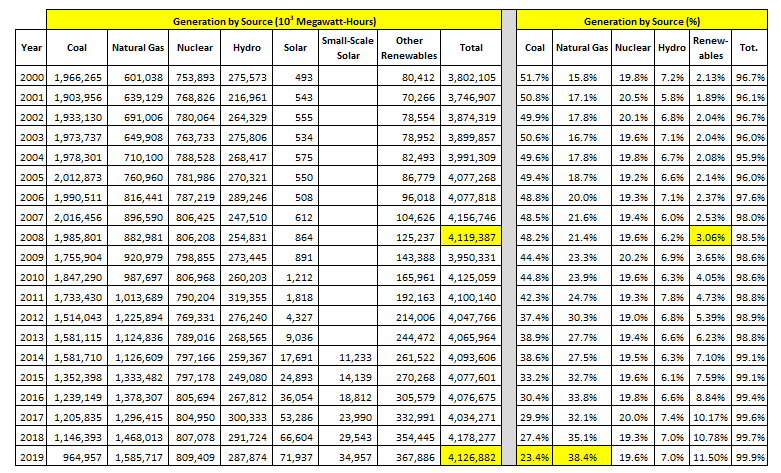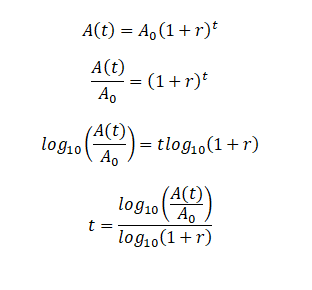You're Going the Wrong Way! - Carbon-Free Electricity by 2035? No Way!
SUMMARY:
- President Biden has established a goal of 'carbon free' electricity by 2035.
- Even under the most optimistic assumptions, and ignoring the enormous problem of electricity storage, this goal is clearly unachievable.
- In fact, as the use of wind and solar electricity has breached 10% of net generation, the length of time it will take to 'decarbonize' the production of electricity has increased! (law of large numbers)
- President Biden's goal of a carbon free grid shares many similarities with the 5-year plans promulgated by the Supreme Soviet.
- If this aspect of the Green New Deal is pursued with the same vigor as the 5-year plans of the Soviet Union, it will cause a similar amount of economic damage.
DISCUSSION:
The economist Kenneth Boulding famously said, "Anyone who believes that exponential growth can go on forever in a finite world is either a madman or economist." As the discussion below will describe, he could have added 'Green New Dealer' to the type of people who believe exponential growth can continue indefinitely. Indeed, it is only by virtue of indefinitely continuing exponential growth that President Biden's goal of carbon free electricity by 2035 can be discussed with anything remotely a straight face.
In fact, not only is indefinitely continuing exponential growth a necessary prerequisite for a carbon free grid by 2035, but so are these conditions;
- Storage - the vast majority of which will have to be supplied by batteries - can expand even faster than the production of renewable energy. (1)
- The increased electricity generation required to support electric vehicles is ignored. A conservative estimate of the increased electricity generation needed to replace the 143-billion gallons of gasoline used by automobiles in 2018 is 27%. (2)
- Going forward, the additional 'carbon free' electricity will only come from wind and solar. Essentially, this means no net increase from either nuclear or hydro power. This is a reasonable assumption.
TABLE 1:

Table 1, which includes data from the Energy Information Administration, (3), describes how much electricity is generated in the United States and how this electricity is generated. The data in this table, the yellow highlighted cells in particular, will be used for calculating how long it will take to decarbonize electricity generation. For the discussion here, 2008 was established as the baseline year, while the amount of electricity that has to be decarbonized was based on 2019. In 2019, roughly 61.8% of the electricity generated in the US required the burning of fossil fuels. Note that among the 'carbon free' sources of electricity, renewable energy as wind and solar badly trails nuclear energy. (4) Based on 2019 data;
- approximately 2,555,050x103 MW-hour of electricity currently generated by fossil fuels will have to be generated by renewables to achieve a carbon-free grid by 2035.
- approximately 474,600 x103 MW-hour of electricity were generated by renewables
- therefore, the total renewable electricity generation required by 2035 is the combination of these two figures, or 3,029,700x103 MW-hour
Table 2 below summarizes the results of a calculation to determine the number of years it will take to increase renewable energy production to a total of 3,029,700x103 MW-hours. (5) For the two most recent years - 2018 and 2019 - the length of time it will take to increase renewable energy generation by the required amount is increasing from where it was for the years 2010-2014! Of course, this is the law of large numbers at work. While more renewable energy is produced each year - which should reduce the time it takes to achieve carbon free electricity - it becomes more difficult to increase this electricity production by a large amount. Because it is the annual rate of increase that drives the time to produce a carbon free grid, the end date pushes further out even as renewables form a a larger part of electricity generation.
TABLE 2:

CONCLUSION:
The goal of carbon free electricity by 2035 is not a serious goal.
The goal has no basis in how renewable electricity has developed over the past decade, and is completely divorced from the enormous amounts of renewable electricity that must be produced. Even assuming no issues with storage, and no increased electricity generation to account for electric vehicles, there is no chance of producing the enormous amounts of electricity needed for carbon free electricity by 2035. By virtue of its dislocation from reality and its focus on political posturing, President Biden's goal for a carbon free electricity grid is little different from any number of 5-year plans of the Supreme Soviet.
Peter Schmidt
Sugar Land, TX
April 18, 2021
PS - As always, if you like what you read, please register with the site. It just takes an e-mail address and I don't share this e-mail address with anyone. The more people who register with the site, the better case I can make to a publisher to press on with publishing my book. Registering with the site will give you access to the entire Confederacy of Dunces list as well as the financial crisis timeline.
Help spread the word to anyone you know who might be interested in the site or my Twitter account. I can be found on Twitter @The92ers
ENDNOTES:
1. The battery technology of choice remains lithium-ion. Unfortunately, these batteries are at risk from 'thermal runaway' and exploding. Once on fire, these batteries generate a witches brew of toxic chemicals while also generating additional volumes of flammable gasses. Battery fires of this type are very difficult to extinguish. Recall also the teething problems experienced by the 787 Dreamliner aircraft when it replaced conventional lead-acid batteries with lithium-ion batteries to save weight.
https://www.fema.gov/case-study/emerging-hazards-battery-energy-storage-system-fires
2. http://www.the92ers.com/blog/energy-infrastructure-self-righteous-environmentalism-electric-vehicles-and-electric-power
3. https://www.eia.gov/electricity/monthly/epm_table_grapher.php?t=epmt_1_01
4. This article discussed the relationship between increased wind and solar energy generation and the reduction in operating nuclear plants.
http://www.the92ers.com/blog/electricity-housing-and-best-laid-central-plans-mice-and-men
5. The equations below describe how the results in the table were calculated. Essentially the total renewable energy for a particular year is used as A0. The year over year increase in renewable energy production is used as the rate of increase, (r), going forward. The values for A0 and r were then used to calculate how long it would take for renewables to reach A(t), or 3,029,700x103 MW-hour of generation.


